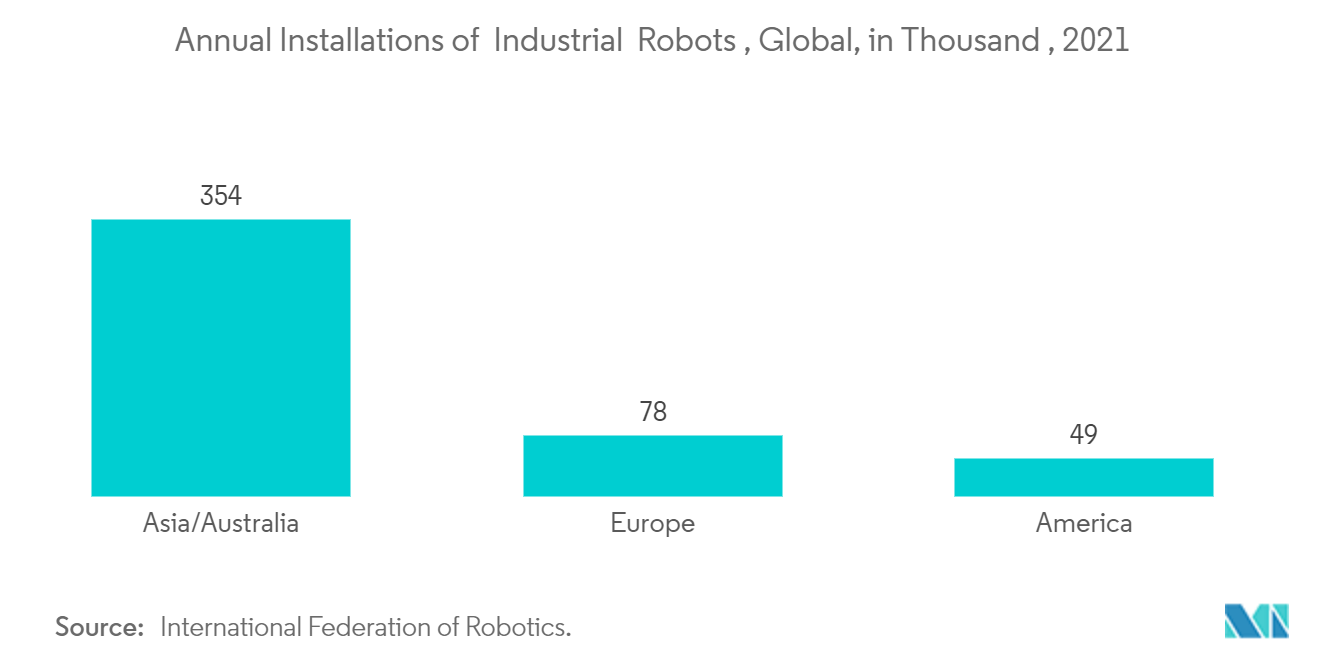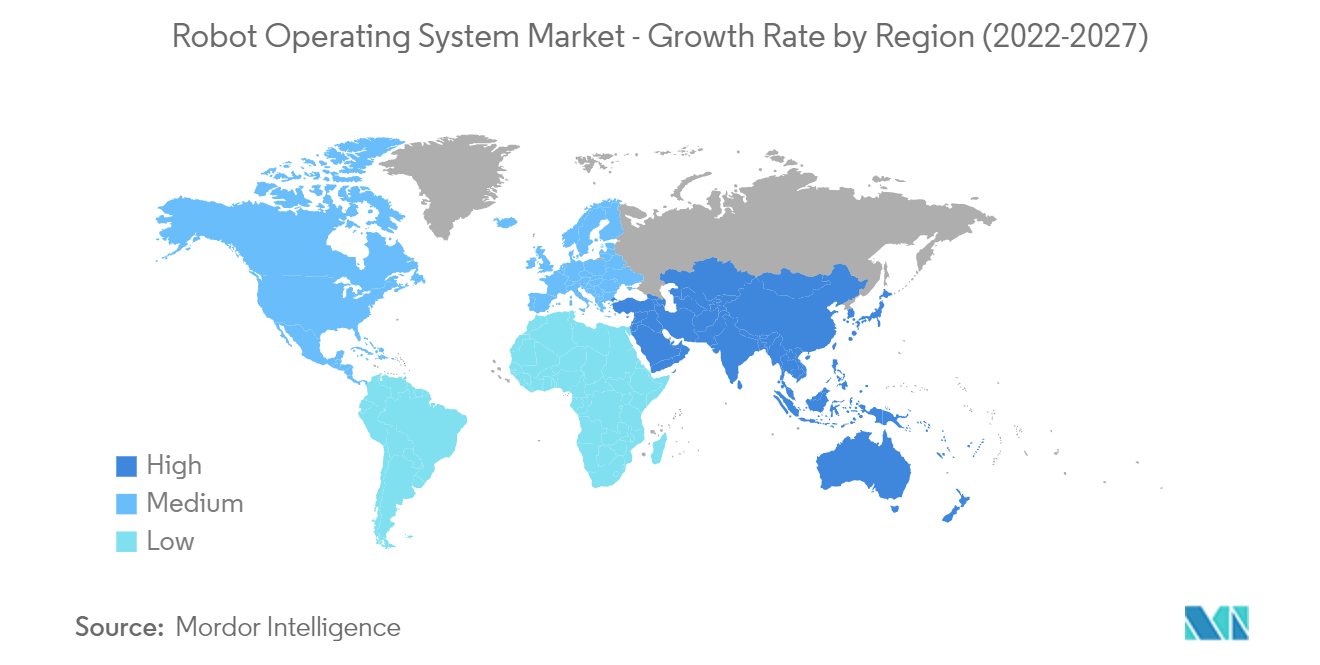Market Trends of Robot Operating System Industry
This section covers the major market trends shaping the Robot Operating System Market according to our research experts:
Increased Adoption of ROS by End-user Industries is Expected to Drive the Market Growth
- The increasing demand for autonomous robots is fueling the adoption of open-source ROS, as software development for such robots faces multi-disciplinary challenges. According to MHI Industrial Annual Report, 2022, the technology adoption rate of robotics and automation accounted for 65.1% in 2021 and is expected to reach 73% by 2025.
- The demand for such robots is increasing numerously due to their different operational behavior and patterns. Furthermore, they are smaller and made with the perfect orientation and instructions to perform tasks without errors and delays in actions. It is increasingly demanded with applicability for conditions, such as not-so-human friendly conditions, elevated temperature, pressure, and challenging to reach hazardous places.
- With the massive influx of players in order fulfillment, warehouse, and logistics space, such markets serve a ready yet sustainable market for ROS-based solutions. Plus, warehouse labor shortages have primarily motivated the logistics company to employ bots within their warehouse.
- There has been rapid development in the ROS software by vendors studied in the market for supporting the growth of robotics in commercial and industrial adoption. In April 2021, Canonical and Open Robotics announced a partnership for Robot Operating System (ROS) Extended Security Maintenance (ESM) and enterprise support as part of Ubuntu Advantage, Canonical's service package for Ubuntu.
- The partnership helps in supporting the robotics community by making ROS robots and services easier to build and package, more straightforward to manage, and more reliable to deploy.
- However, a challenge that remains to be focused upon is analytics. Most of the data collected from AMRs and sent to advanced cloud spaces for processing makes the cloud build latency and, in turn, high cost of an operating system.

Asia-Pacific is Expected to Grow at a Significant Growth Rate
- Asia-Pacific has recorded impressive growth in robots, both in volume and robots. It is expected to have the highest growth rate during the forecast period owing to the increasing adoption of automation by manufacturing industries and the adoption of industrial robots throughout the region.
- Countries such as China, Japan, Thailand, and South Korea manufacture both commercial and industrial robots in high volume. The adoption rate of robotics in China and India is very high, owing to the massive deployment in the electronic and automotive manufacturing sectors.
- The Indian government, for instance, plans to invest in military robotics and has recently tied up with Japan. By 2023, the country plans to implement AI and induct around 544 advanced robotic soldiers that are lightweight and consist of surveillance cameras and transmission systems with a range of 200 meters for the purpose.
- China is expected to witness an automation surge over the forecast period. According to IFR, 71% of all newly deployed robots in 2020 were installed in Asia, up from 67% in 2019. The region's largest adopter was China, where the installations grew strongly by 20% with 168,400 units. This was also the highest value recorded for a single country, with the operational stock reaching 943,223 units (+21%).
- The "Made in China 2025" plan began as a 10-year vision to transform China from a low-end to a high-end producer of goods, aiming to make China the global leader in high-tech manufacturing. This transformation may positively impact technologies like AI, Big Data, IoT, and robotics and enhance automation and industry 4.0. The fast industrialization, massive overseas investment, and continuing to be a manufacturing powerhouse accords China a vast market for the use of robotics.
- China's National Development and Reform Commission has announced an AI three-year implementation program expected to accelerate the adoption of advanced technologies to help the country become a superpower by 2030.n Moreover, an investment support program launched in May 2021 is expected to boost investment in machinery and equipment further. According to IFR, the demand for robots both from the electronics industry and automotive suppliers is expected to grow substantially by 11% in 2021 and by 8% annually on average in the following years.


